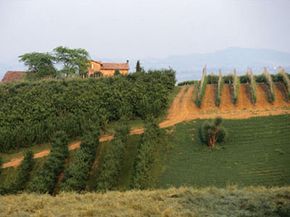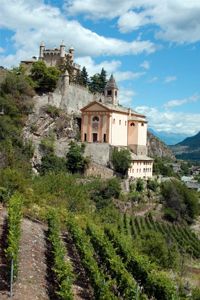Have you ever enjoyed a glass of sweet Lambrusco wine? This flavorful wine comes from the northern Italian region of Emilia-Romagna, one of Europe's most luxurious areas. The cuisine and wines of this land, developed over centuries, have a worldwide reputation. Geographically, Emilia-Romagna consists of two distinct regions, to the west and east of the regional capital of Bologna.
Emilia is named for the Via Aemilia, a road built by the ancient Romans that connected Bologna to the cities of Modena, Reggio Emilia and Parma to its northwest. The ancient Romans also lent their name to the eastern portion of the province, which stretches to the Adriatic Sea and includes Ravenna, once the capital of the Western Roman Empire.
Advertisement
Emilia-Romagna lies to the south of the Po River, and the fertile Po valley is the source of the region's agricultural wealth and high standard of living. Bologna is considered Italy's center of gastronomy, and a variety of distinctive wines are cultivated in the area to match the specific flavors of local products such as ragù.alla bolognese (bolognese sauce) and balsamic vinegar of Modena. The dry wines of Romagna, like Sangiovese and Albana, are not very well known among casual wine drinkers, but the signature beverage of Emilia -- Lambrusco -- was popularized by the Riunite brand and became one of the most popular American imports during the 1970s. Yet so much of a good thing isn't always such a good thing. The popularity of an inexpensive, cloyingly sweet Lambrusco has obscured the high quality and individuality of the different strains of the Lambrusco grape. More recently, artisanal Lambrusco has begun to get its share of recognition.
Let's take a light and frothy tour through the fascinating history of Emilia-Romagna and its viticulture. We'll learn how Italians grow wine grapes and administer the business of wine, and we'll also investigate the delightful diversity of the Emilia-Romagna terroir. Grab a carafe and andiamo!
Advertisement


